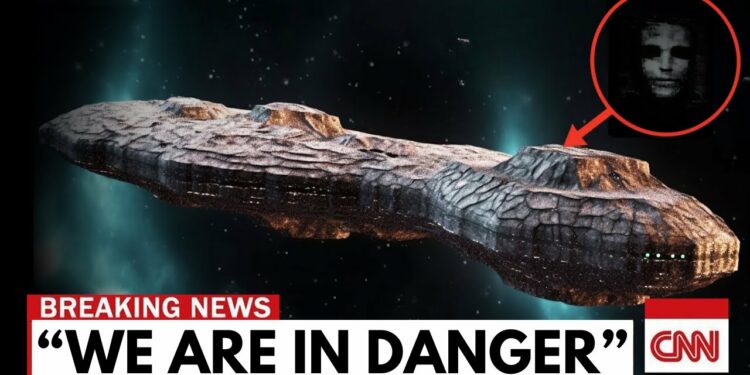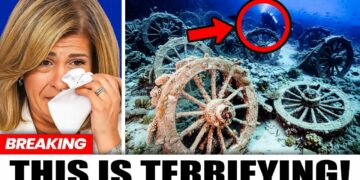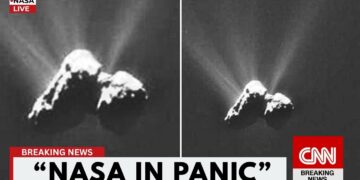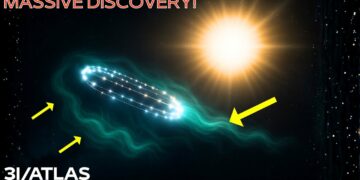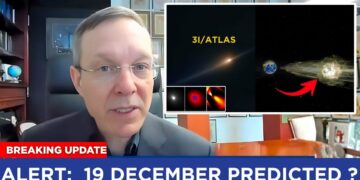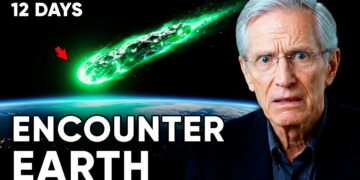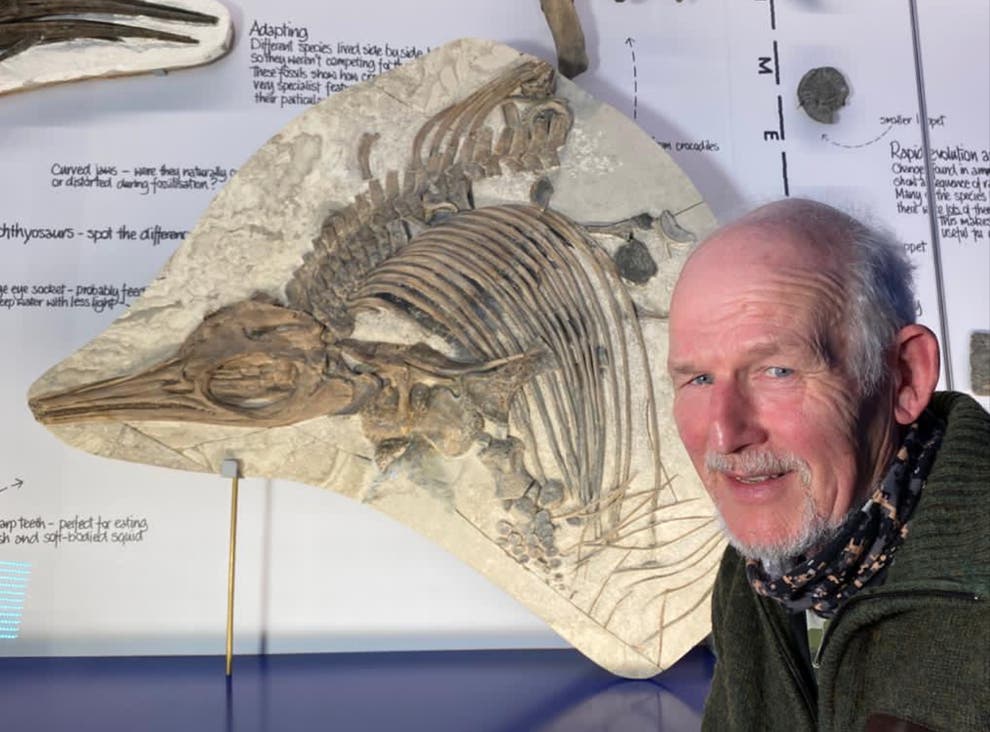In the profound silence of deep space, where no air carries sound and no light reaches unaided, Voyager 2 drifts farther than humanity ever dreamed. A ghostly vessel powered by decaying atoms, it sails endlessly into the black unknown, transmitting fragments of distant realities back to Earth. Recently, something shifted. Buried within waves of seemingly harmless data, an image was rediscovered—not by chance, but through artificial intelligence trained to detect what human eyes could never perceive. What it revealed was chilling: not a glitch or random blur, but structure, design, purpose. A hidden image that confirms what many feared but dared not voice: Voyager 2 may not have merely observed space—it may have witnessed something observing us.
Since their launch in the 1970s, Voyager 1 and 2 have transcended their mechanical origins, becoming the furthest extensions of human curiosity. While Voyager 1 charted Jupiter and Saturn, Voyager 2 followed a stranger path, tasked with exploring the forgotten giants, Uranus and Neptune. Its mission was not just exploration but redefinition. In 1981, Voyager 2’s flyby of Saturn stunned scientists with an intricate image of its outermost F-ring, revealing braided patterns and kinks that shattered assumptions of uniform ring systems. Instead of order, there was chaos intertwined with sculpted beauty, hinting at forces beyond mere gravity.
The true shock came in 1986 at Uranus. Voyager 2 didn’t just pass a cold, spinning planet—it uncovered secrets hiding in plain sight: undiscovered moons, unexpected rings, and magnetic chaos. It traversed a plasmoid, a massive structure of planetary magnetism, and survived. The recently flagged image was captured just before Voyager crossed Uranus’s magnetic field, moments before its instruments registered something peculiar. Years later, as Voyager 2 ventured into the outer heliosphere, NASA shared terabytes of archived data with independent researchers and AI developers. Among these was an image from Uranus, long dismissed as static noise. Processed through a new AI filter designed to detect non-random anomalies, it revealed something astonishing: faint but undeniable symmetry. At first, it resembled a torus, a ring shape common in magnetic simulations. But its inner patterns—too precise, too clean—mimicked circuitry, alignments suggesting something artificial briefly entered Voyager’s view, or perhaps had been there all along.
The data was verified as untouched, raw transmission. As Voyager 2 crossed the heliosphere—the protective bubble shielding Earth from galactic radiation—many expected its signals to fade. Yet, in 2018, its plasma wave instrument detected a faint, persistent hum. Initially dismissed as interstellar turbulence, closer analysis revealed a consistent tone tied to plasma density beyond the solar bubble—a first in human history. More unsettling, the density fluctuated rhythmically, a slow, deliberate pulse described as eerily regular. Voyager 2, 14 billion miles from Earth, was detecting something that shouldn’t have structure or rhythm. Was it a natural phenomenon mimicking intelligence, or intelligence mimicking nature?
The rediscovered image reignited interest in Voyager’s iconic “pale blue dot” photograph—Earth, a fragile speck in a sunbeam. But what if that perspective wasn’t ours alone? The AI-enhanced image from Uranus, with its symmetry and proximity to the plasmoid event, suggested Voyager captured a presence—not fully visualized, but hinted at through geometry, electromagnetic distortions, and plasma behavior. A presence that appeared briefly and vanished, as if it was watching without revealing itself.
Scientists now debate whether this image could be humanity’s first accidental photograph of something otherworldly, a footprint left in electromagnetic signatures. A retired mission engineer recently uncovered a 1986 log from Voyager 2’s Uranus encounter, noting a 2.4-second data surge with synchronized voltage irregularities across sensors. Dismissed then as magnetic interference, the surge’s timestamp aligns perfectly with the hidden image, suggesting a near-field proximity event. Remarkably, Voyager suffered no collision or damage—its trajectory unchanged, as if something maneuvered around it or passed through it undetected. The instruments weren’t malfunctioning; they were overwhelmed.
The AI that uncovered the image, designed for object recognition and pattern matching, began behaving erratically during extended analysis. It halted processes, flagged harmless data as critical, and once auto-terminated an analysis loop, citing a “cognitive feedback hazard.” Though dismissed as overfitting, some speculate the AI detected intentionality in the data—not just structure, but awareness. Meanwhile, the plasma wave data from the same moment showed a near-perfect fractal spiral, a pattern that repeated briefly before vanishing. Such a pattern, unprecedented in decades of space data, suggests a response directed at Voyager, like a signal awaiting an answer.
An anthropologist, shown the AI-enhanced image, noted its resemblance to ancient star maps—Babylonian stonework and Aboriginal dreamtime depictions with circular patterns and intersecting arcs. She proposed that Voyager’s discovery and these ancient symbols might tap into a universal memory, glimpses of something beyond the veil. The image isn’t just data; it may be a map, not of where we’ve been, but of where something else resides.
Voyager 2 was built to observe, not to warn. Yet, after decades in the cosmic dark, it has become a messenger of an unsettling truth. Hidden in forgotten frames and dismissed anomalies lies an image that poses a question too vast to ignore: What if something was already out there, waiting for us to notice? This is not fiction but data—science colliding with mystery. By enhancing what human eyes overlooked, AI revealed not chaos but intention: patterns, pulses, and symmetry that defy chance. Voyager 2 may have crossed not just the solar system’s edge, but into another’s domain, where we are not pioneers, but intruders. The veil has slipped, and the greatest fear is no longer solitude in the universe—it’s the realization that we may never have been alone.

